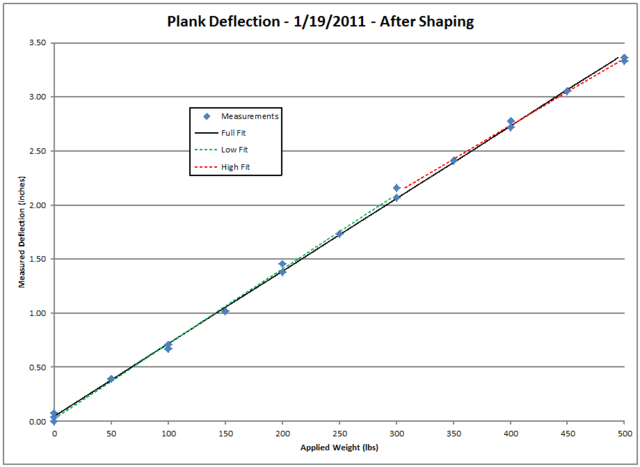I usually plot a number points and fit a line to the data.
It has two advantages over the single-weight method:
- The error in individual measurements tends to average out.
- I can see if there is any deviation from linearity.
The graph below is from
my plank build this January:


